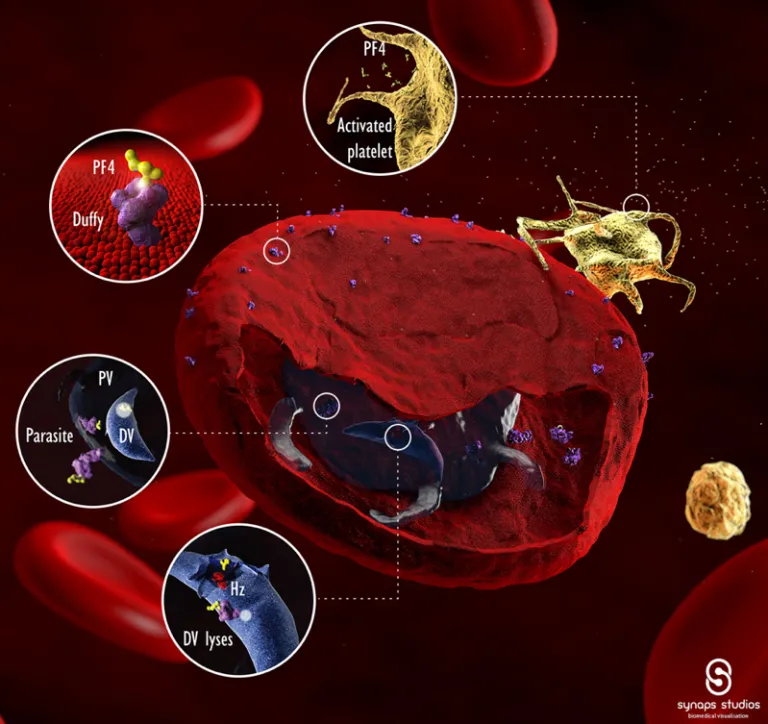The roles of platelets in the protection against malarial infection
The McMorran group discovered that platelets play a protective role in malaria by releasing Platelet factor 4 (PF4), which kills the parasite, and are currently studying the molecular mechanisms behind this function.
Research themes
Project status
Content navigation
About
Platelets best known for their roles in haemostasis and thrombosis in the bloodstream. They also have many functions in the immune system, including in innate immunity and host defence against microbial infection. The McMorran group was the first to describe that platelets play a protective role in malarial infection (McMorran et al. 2009). Platelets bind to Plasmodium-infected erythrocytes, become activated and release a molecule called Platelet factor 4 (PF4). The PF4 can enter and accumulate inside the parasite, and then kill the parasite by inducing lysis of the digestive vacuole (DV), which the parasite needs to survive and reproduce itself. The PF4 molecule enters the cell and parasite via red cell membrane protein called Duffy, and parasites growing in red cells that lack Duffy are not killed by the platelet (McMorran et al. 2012). Our discoveries implicate a relationship between the Duffy-negative allele and rates of P. falciparum infection; both are highly prevalent in African populations. Although our studies (in non-African groups) have also shown the occurrence and importance of platelet-mediated protection in malaria patients (Kho et al. 2018). Current projects are aimed at understanding the molecular mechanisms involved in the platelet killing function and the reasons for platelet loss early in malarial infection (Figure).
Related reading
McMorran, B.J., et al., Platelets kill intraerythrocytic malarial parasites and mediate survival to infection. Science, 2009. 323(5915): p. 797-800.
McMorran, B.J., et al., Platelet factor 4 and Duffy antigen required for platelet killing of Plasmodium falciparum. Science, 2012. 338(6112): p. 1348-51.
Kho, S., et al., Platelets kill circulating parasites of all major Plasmodium species in human malaria. Blood, 2018. 132(12): p. 1332-1344.

(Figure) Illustration shows how platelets kill Plasmodium parasites by binding the parasitised host red blood cell, releasing Platelet factor 4 (PF4), entering the parasite (via the Duffy receptor) and lysing the parasite digestive vacuole (DV).
Image produced by Dr Andreas Greth, Macquarie University.

